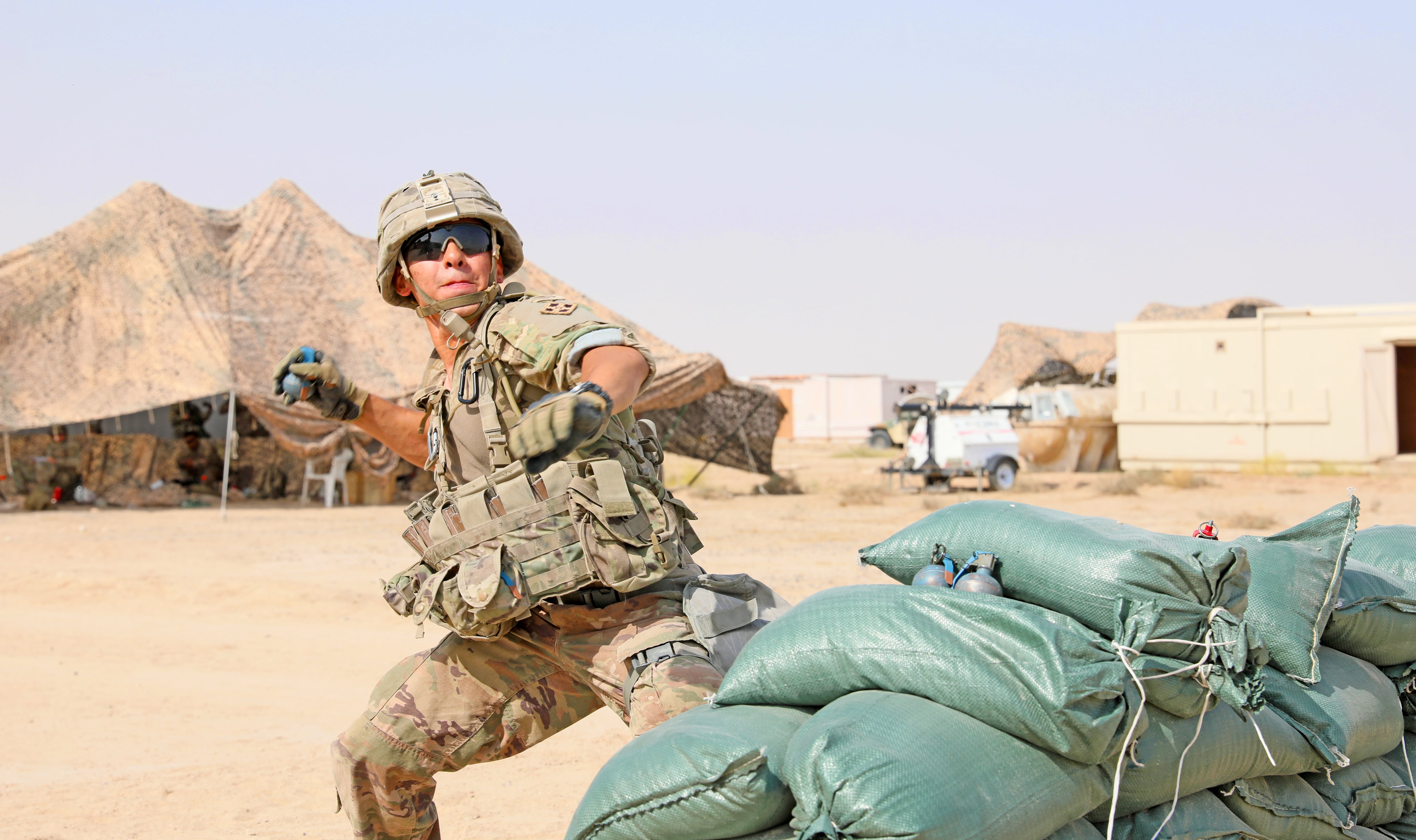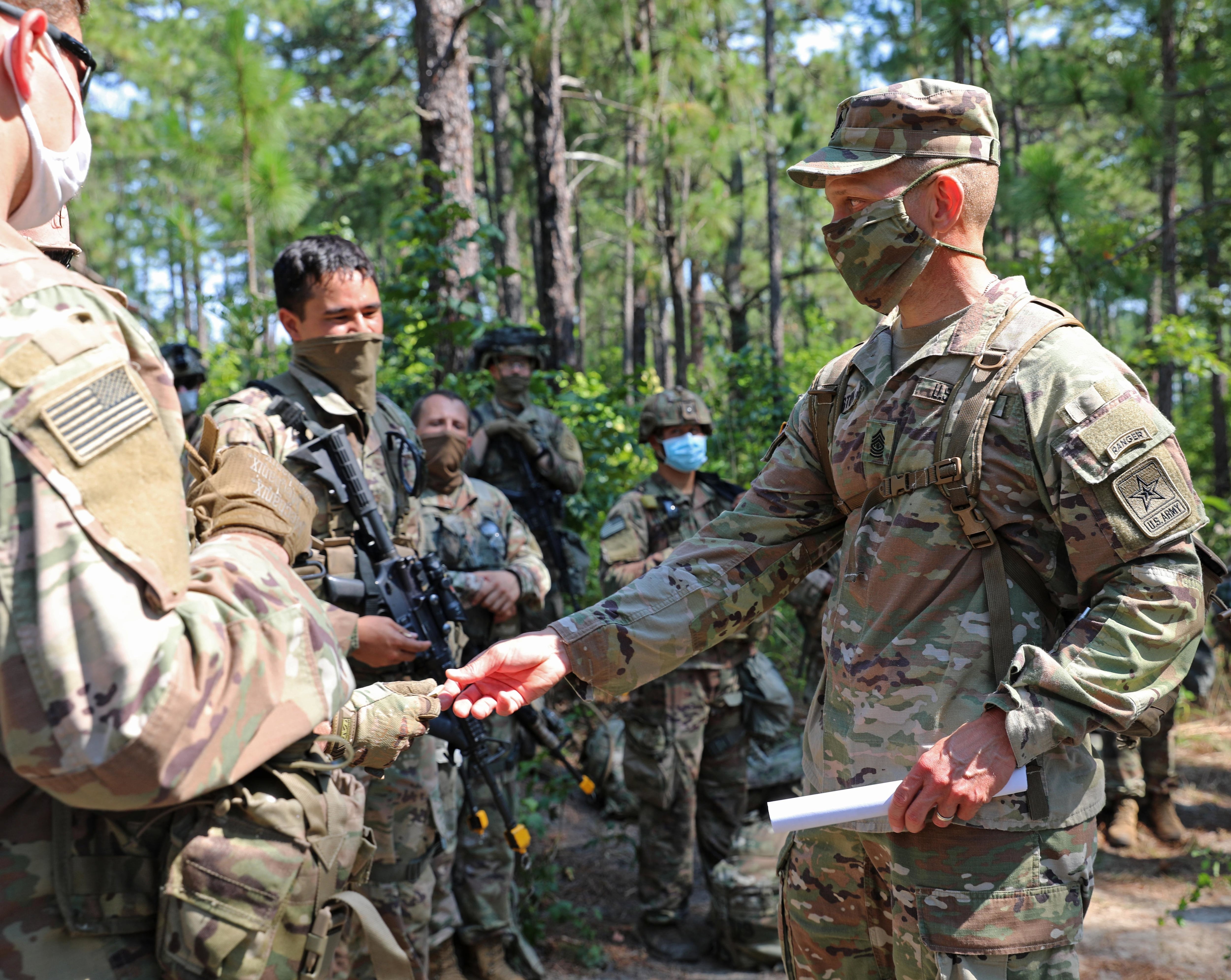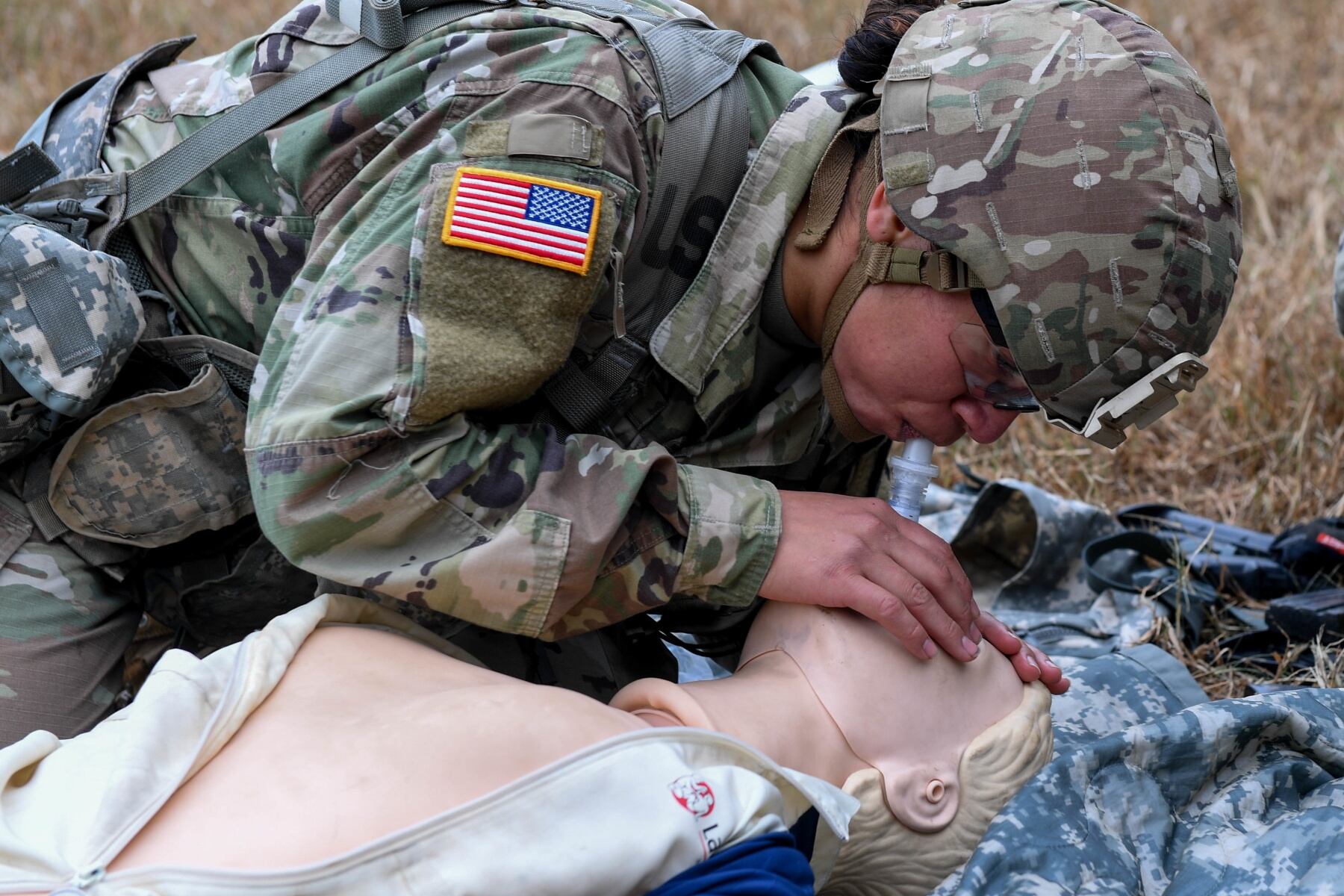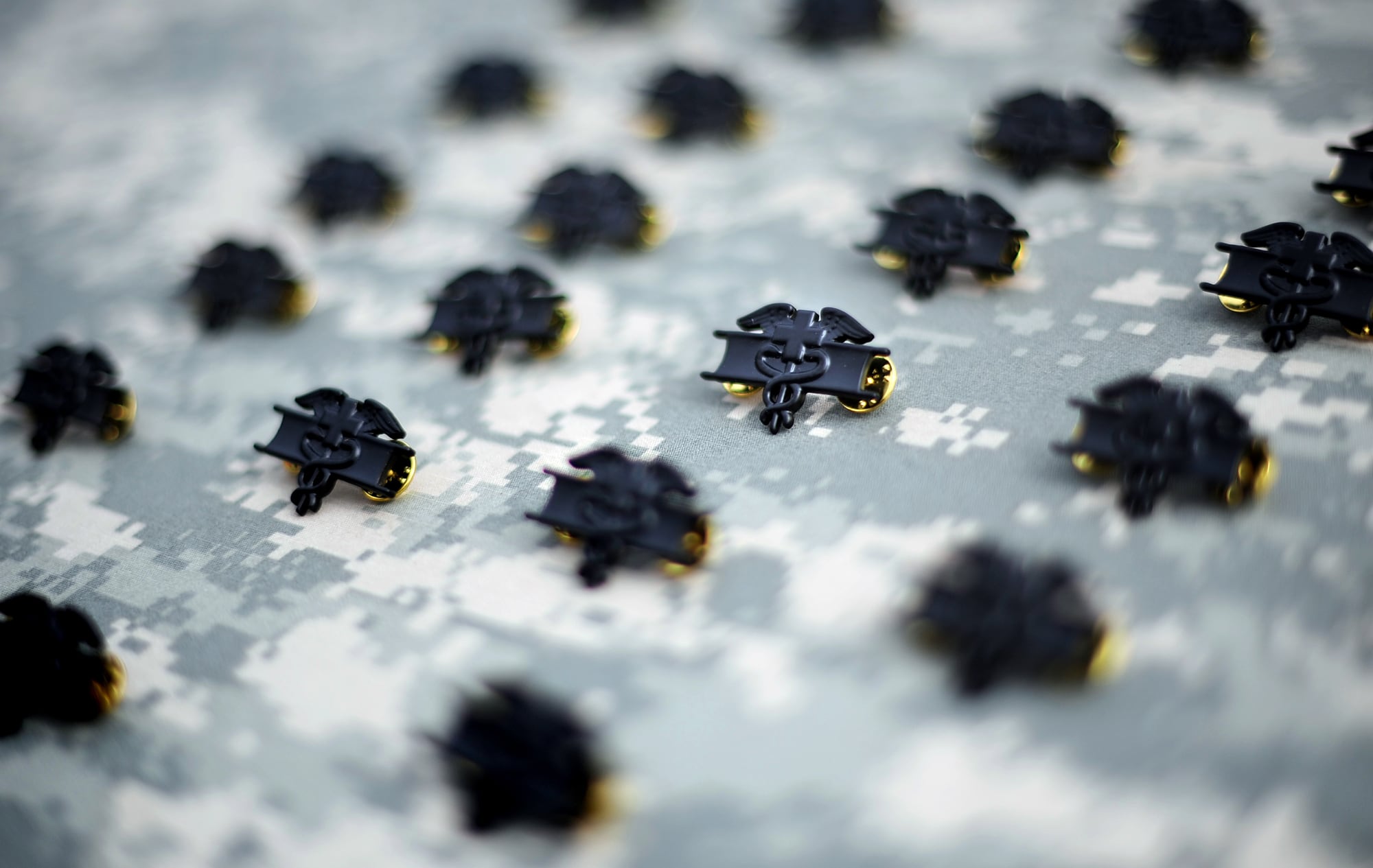In the coming months, soldiers across the Army will have the chance to test for their MOS-related expertise badge two to three times a year.
The change was prompted by senior enlisted soldiers at Training and Doctrine Command, some centers of excellence and operational units led by 10th Mountain Division. Together, the group ironed out the kinks in what has historically been a cumbersome testing process.
For example, Command Sgt. Maj. Mario Terenas, with 10th Mountain Division, told reporters on a call Tuesday that the division often could only offer testing for the badges once a year and, due to operational commitments, sometimes only once every few years.
RELATED

That meant that Army staff sergeants hoping to pin on sergeant first class or even to simply know how well they stacked up to the standards for the Expert Infantry Badge, Expert Field Medical Badge or Expert Soldier Badge, had few opportunities to test their mettle.
The EIB was created in 1945; the EFMB in 1965; and the ESB in 2019.
Testing was held up by shared tasks, such as operating a machine gun or running land navigation, that still had slightly different standards for separate badges.
For instance, soldiers testing to earn their ESB had to work a claymore in their patrol section while the EIB soldiers ran it in their weapons section. Making the tests more similar saved time and resources.
Over the past few years, the differences have been more standardized, said TRADOC Command Sgt. Maj. Daniel Hendrex. But he added that there are no substantial changes to the actual tasks and passing grades for earning the badge.

With enough overlap they can streamline the tests, running the shared tasks for all three badges at once, freeing up space, time and testers.
For example, Hendrex said about 83 percent of the EIB tasks are the same as ESB.
And they’ve cut down the time, too.
Previously, Terenas said, the whole course — training up, setting up and testing — took about 45 days and involved a high level of command.
Now, the initial training is on that soldier’s company, troop or battery to get them prepped.
And they have “jobs books” to help them review, as well as a set of videos showing them exactly what they need to know when they perform these tasks for the tests.

When they arrive at the badge course, soldiers will get one week of training and one week of testing.
So far, an estimated 3,500 soldiers with 10th Mountain have gone through or are currently in the badge process, Terenas said.
The division’s goal is to see 500 EIBS; 100 to 150 ESBs; and 30 to 50 EFMBs from the three pilot programs this year. The final pilot of the fiscal year tests on Friday, Terenas said.
The first pilot in May with 10th Mountain Division saw some bumps.
“I was very confident. I thought, ‘We’re going to do okay, probably the same or below average [completion rates],” Terenas said.
But at the first day they had a “substantial loss” of candidates.
That’s when Terenas thought this might be a “unmitigated disaster.”

However, as the days passed with the first pilot and again with the second pilot, Terenas saw about a 2-3 percent uptick in completion rates for the badges overall.
The EIB saw nearly a 20 percent first-time pass rate; ESB nearly 21 percent; and the EFMB had eight of 14 candidates pass on the first try, he said.
Though those initial pass rates are not high, Hendrex said the additional opportunities will see more chances to pass. More importantly, increased chances to take the test gives soldiers more time to work those critical skills key to their jobs and soldiering.
In the next 30 days, Hendrex said, refinements will be made. But he was confident that by the end of October, a finalized version could be ready for Army use.
Todd South has written about crime, courts, government and the military for multiple publications since 2004 and was named a 2014 Pulitzer finalist for a co-written project on witness intimidation. Todd is a Marine veteran of the Iraq War.





